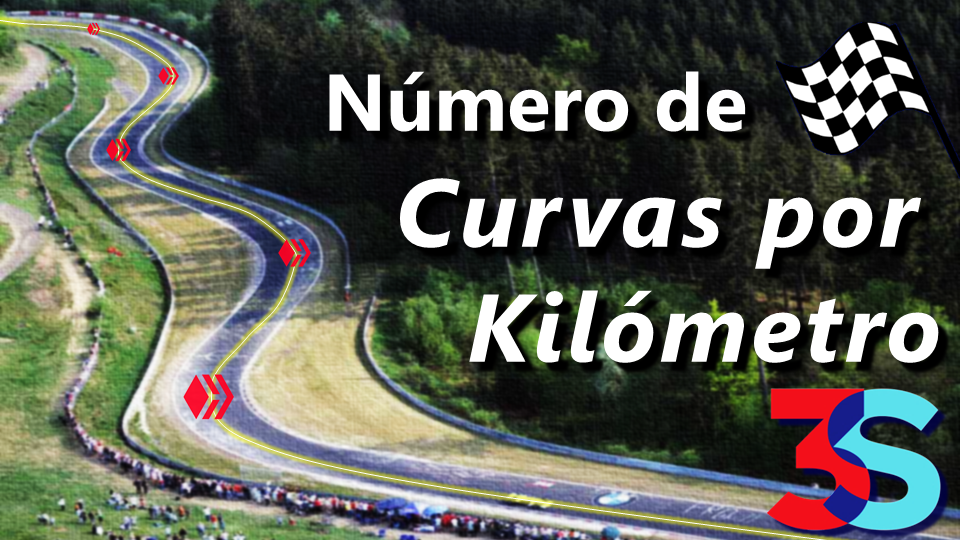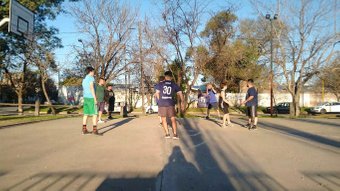Análisis del N° de Curvas / Kilómetro en circuitos de Fórmula 1 — Turns/Km in F1 circuits [ESP-ENG]
8
About :
El número de curvas por Km (curvas/Km) no es más que el promedio de la cantidad de curvas que te encuentras por cada Kilómetro del circuito recorrido. Por ejemplo, si recorres 1 Km de autopista, y te encuentras con 5 curvas, entonces hay 5 curvas por Kilómetro en ese tramo de autopista. Si son 10 curvas en 5 Kilómetros, son 2 curvas/Km, y así.
The number of curves per Km (curves/Km) is nothing more than the average of the number of curves you encounter per Kilometer of the circuit traveled. For example, if you drive 1 Km of highway, and you encounter 5 curves, then there are 5 curves per Kilometer on that portion of highway. If there are 10 curves in 5 Kilometers, then there are 2 curves/Km, and so on.

Este es un parámetro o dato técnico muy interesante para los circuitos de Fórmula 1 actuales, y permite medir de cierta forma que tan "trabados" son o por lo menos que "densidad" de curvas poseen en toda su longitud. Los circuitos con un valor bajo serían en los que el auto pasa más tiempo acelerando y menos tiempo frenando o pasando por curvas.
Y digo circuitos actuales, porque muchos de los circuitos antiguos poseían formas un poco más "abstractas" que los circuitos modernos. Esto hace que sea difícil contar o diferencias una curva de otra, haciendo que en los circuitos antiguos, con sus curvas más redondeadas y "difusas", sea difícil determinar de manera precisa el número de curvas por Kilómetro.
Un ejemplo de ello es Nürburgring Nordschleife, un circuito de más de 20 Kilómetros el cual algunos dicen que tiene 73 curvas pero otros dicen que tiene 154.
This is a very interesting parameter or technical data for the current Formula 1 circuits, and it allows to measure in a certain way how "tight" they are or at least how much "density" of curves they have along their length. The circuits with a low value would be the ones where the car spends more time accelerating and less time braking or going through corners.
And I say current circuits, because many of the older circuits had somewhat more "abstract" forms than modern circuits. This makes it difficult to count or differentiate one curve from another, making it difficult to accurately determine the number of curves per Kilometer on the older circuits, with their more rounded and "diffuse" curves.
An example of this is the Nürburgring Nordschleife, a circuit of more than 20 kilometers which some say has 73 curves but others say it has 154.

Pero este valor nos arroja algunas sorpresas, nos mostrará que algunos circuitos no son tan trabados como pensábamos y otros no son tan "rápidos" como pensábamos.
Pero recordemos que este valor es un promedio del número de curvas por Kilómetro, y no hace distinción de la forma de las curvas, ni de cómo están distribuidas en el circuito, ni de si son curvas que se trazan a fondo o se requiere frenar. Estos son los detalles que, más allá del número de Curvas/Km, pueden hacer que un circuito sea proclive o no de dar espectáculo en carrera.
But this value gives us some surprises, it will show us that some circuits are not as tight as we thought and others are not as "fast" as we thought.
But let's remember that this value is an average of the number of curves per kilometer, and does not distinguish the shape of the curves, nor how they are distributed in the circuit, nor if they are curves that are flat out or require braking. These are the details that, beyond the number of turns/km, can make a circuit more or less likely to provide a spectacle in a race.

En este video de #3Speak veremos el número de curvas por Kilómetro de circuitos de F1, de por lo menos de los años 90' para acá, y compararemos diversos circuitos entre sí de acuerdo a este número para analizar lo que los diferencia entre sí y los caracteriza.
Este post y video serán una guía a lo largo de toda la temporada 2022 para continuar con la serie de videos en #FullDeportes dedicados al análisis de los distintos circuitos de Fórmula 1.
In this #3Speak video we will look at the number of corners per Kilometer of F1 circuits, at least from the 90's to the present, and compare different circuits with each other according to this number to analyze what differentiates them from each other and characterizes them.
This post and video will be a guide throughout the 2022 season to continue the series of videos in #FullDeportes dedicated to the analysis of the different Formula 1 circuits.
Música: Piano Bar - Piano Lounge Background Chill Music (de JuliusH) - Pixabay
Música: Let It Go (de ItsWatR) - Pixabay
Música: Cali (de ItsWatR) - Pixabay
SAİT71, CC BY-SA 4.0, via Wikimedia Commons
Steve Gregory from Bradley Stoke, UK, CC BY 2.0, via Wikimedia Commons
Norimasa Hayashida, CC BY 2.0, via Wikimedia Commons
Tom Reynolds, CC BY 2.0, via Wikimedia Commons
ph-stop, cropped/retouched by Morio, CC BY-SA 2.0, via Wikimedia Commons
Imágenes de circuitos extraídas de: Wikimedia.commons
Translated to English with the help of DeepL.com.
| ¡Gracias por visitar! — Deja tu comentario 🚥🏆  |
Tags :
Their limit for today is $0!






























Comments:
Reply:
To comment on this video please connect a HIVE account to your profile: Connect HIVE Account